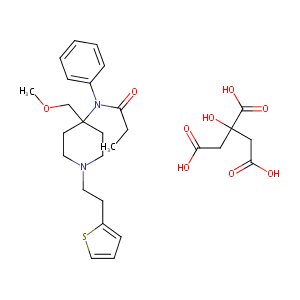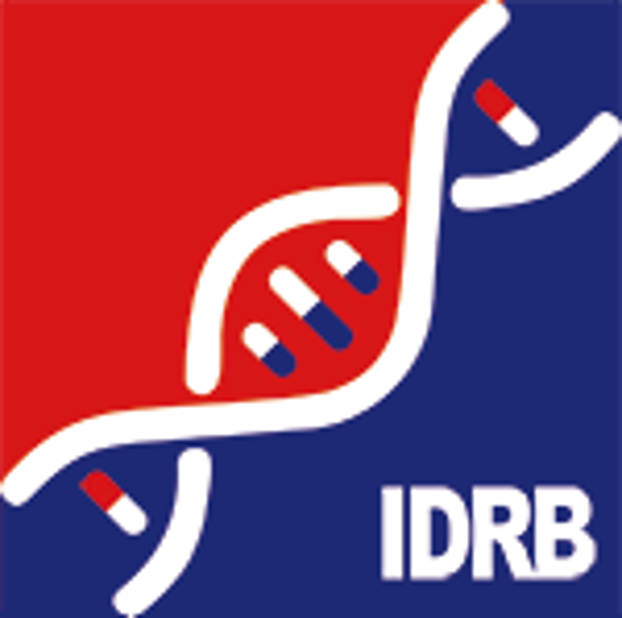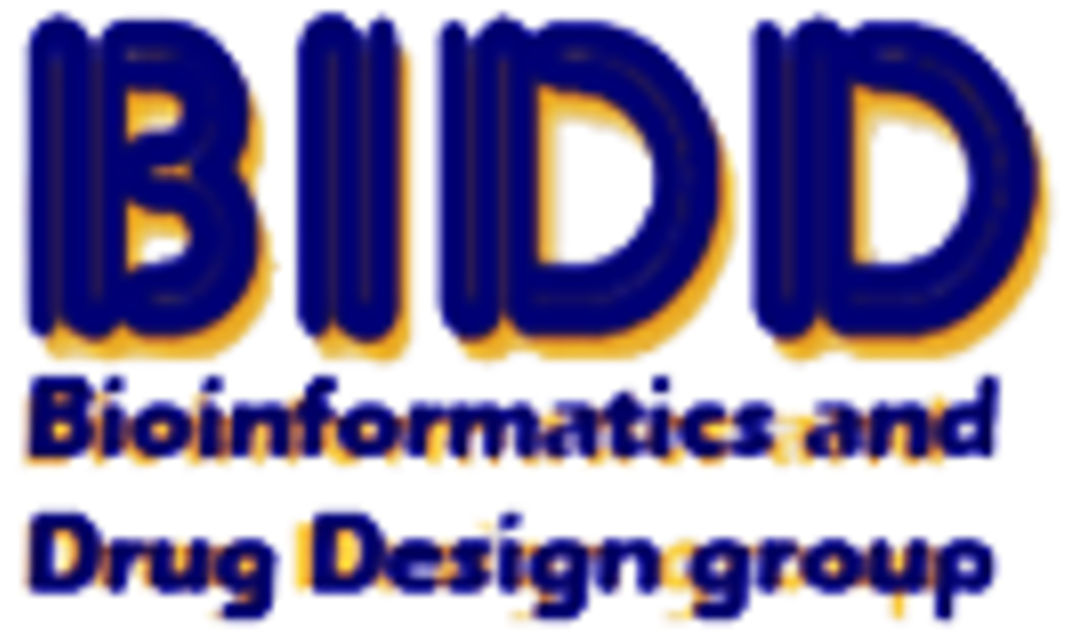Drug Information
| Drug General Information | |||||
|---|---|---|---|---|---|
| Drug ID |
D01SJC
|
||||
| Former ID |
DIB007970
|
||||
| Drug Name |
Transdur-sufentanil
|
||||
| Synonyms |
Sufentanil transdermal patch
|
||||
| Drug Type |
Small molecular drug
|
||||
| Indication | Pain [ICD9: 338, 356.0, 356.8,780; ICD10:G64, G90.0, R52, G89] | Discontinued in Phase 2 | [1] | ||
| Company |
Durect
|
||||
| Structure |

|
Download2D MOL |
|||
| Formula |
C28H38N2O9S
|
||||
| Canonical SMILES |
CCC(=O)N(C1=CC=CC=C1)C2(CCN(CC2)CCC3=CC=CS3)COC.C(C(=O)<br />O)C(CC(=O)O)(C(=O)O)O
|
||||
| InChI |
1S/C22H30N2O2S.C6H8O7/c1-3-21(25)24(19-8-5-4-6-9-19)22(18-26-2)12-15-23(16-13-22)14-11-20-10-7-17-27-20;7-3(8)1-6(13,5(11)12)2-4(9)10/h4-10,17H,3,11-16,18H2,1-2H3;13H,1-2H2,(H,7,8)(H,9,10)(H,11,12)
|
||||
| InChIKey |
OJCZPLDERGDQRJ-UHFFFAOYSA-N
|
||||
| PubChem Compound ID | |||||
| PubChem Substance ID | |||||
| Target and Pathway | |||||
| Target(s) | Mu-type opioid receptor | Target Info | Agonist | [2] | |
| KEGG Pathway | Neuroactive ligand-receptor interaction | ||||
| Estrogen signaling pathway | |||||
| Morphine addiction | |||||
| NetPath Pathway | TCR Signaling Pathway | ||||
| PANTHER Pathway | Heterotrimeric G-protein signaling pathway-Gi alpha and Gs alpha mediated pathway | ||||
| Heterotrimeric G-protein signaling pathway-Gq alpha and Go alpha mediated pathway | |||||
| Enkephalin release | |||||
| Pathway Interaction Database | IL4-mediated signaling events | ||||
| Reactome | Peptide ligand-binding receptors | ||||
| G alpha (i) signalling events | |||||
| WikiPathways | TCR Signaling Pathway | ||||
| GPCRs, Class A Rhodopsin-like | |||||
| Peptide GPCRs | |||||
| Opioid Signalling | |||||
| GPCR ligand binding | |||||
| GPCR downstream signaling | |||||
| References | |||||
| REF 1 | Trusted, scientifically sound profiles of drug programs, clinical trials, safety reports, and company deals, written by scientists. Springer. 2015. Adis Insight (drug id 800015205) | ||||
| REF 2 | [3H]Sufentanil, a superior ligand for mu-opiate receptors: binding properties and regional distribution in rat brain and spinal cord. Eur J Pharmacol. 1983 Feb 18;87(2-3):209-25. | ||||
If You Find Any Error in Data or Bug in Web Service, Please Kindly Report It to Dr. Zhou and Dr. Zhang.

